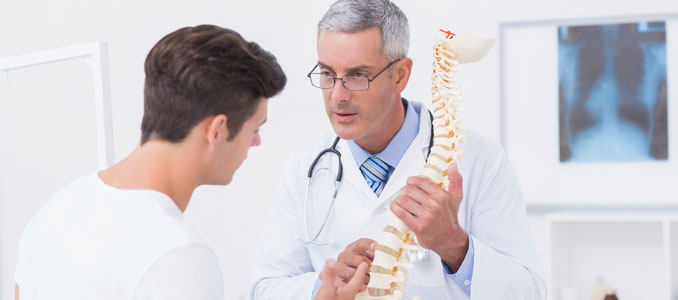HGH Can Treat Osteoporosis
While different medications can help reverse the risk of fractures as we age, you may not know that HGH can treat osteoporosis for many people. It would seem logical that a chemical in the body called human growth hormone would help support better bone density. After all, HGH is all about cellular growth. Although you have long since reached your adult height, your bones are in a constant state of renewal growth.
How can HGH help osteoporosis and improve bone density?
That is the question we will answer in this report. First, it might be beneficial to understand just how the body gets to the point where the bones become osteoporotic.
Bone is made up of three types of cells:
- Osteoblasts – bone-forming cells. Growth hormone, along with its mediating hormone insulin growth factor 1, stimulates the body’s regeneration of new cells. Osteoblasts form based on signals from HGH and IGF-1, also coming from bone marrow. The osteoblast has a single nucleus, and it works with other osteoblasts to build bone which is called osteoid. The osteoid is made of bone collagen and protein. Osteoblasts live on the surface of new bone, controlling mineral and calcium deposition.
- Osteocytes – osteoblasts turn into osteocytes that live inside the bone. Although osteocytes are surrounded by new bone, they connect with other osteocytes by sending out long branches. If a crack or breakage occurs, osteocytes help direct osteoclasts where to go to dissolve the bone.
- Osteoclasts – these are the bone-dissolving cells. Osteoclasts come from bone marrow and are formed as two or more bone cells fuse together causing them to have more than one nucleus. Found on the surface of bone, osteoclasts are also related to white blood cells. The primary function of osteoclasts is bone-remodeling or bone-turnover. Osteoclasts dissolve old bone cells so that they can be reabsorbed by the body, making way for new osteoblasts and osteocytes.
Once the osteoblast team fills in a bone cavity, the cells flatten and line the bone’s surface, becoming bone-lining cells. They continue to regulate calcium passage in and out of the bone. A final function of osteoblasts is to make proteins in response to hormones that will activate osteoclasts.
Continue reading to learn more about osteoporosis and how HGH can help reverse the risk of fractures as you age.
HGH influences bone cell growth to help reduce the risk of osteoporosis.
What Is Osteoporosis?
One of the most debilitating medical conditions for the aging population is osteoporosis, caused by weakened bones. Osteoporosis occurs because bone turnover happens faster than new bone growth. The cycle of a bone cell is about ten years. That is how long it takes for the adult human skeleton to replicate itself. Of course, this does not happen all at once. Only about 10% of bone cells are in the remodeling stage at a given time.
When we look at how HGH can treat osteoporosis, we focus primarily on osteoblast production. Because bones are in a constant state of remodeling, it is necessary to control the speed of bone cell death and resorption to equal that of new bone cell growth. If the old bone cells die faster than new bone cells form, you will be left with a deficit. The cycle of resorption after cellular death of a bone cell is 30 to 40 days. New bone cell formation takes about 150 days. For people with osteoporosis, the new osteoblasts cannot fill the resorption lacuna, causing a loss of bone. With each continuing cycle, the bones become weaker. The porous spaces in the honeycomb-like appearance of bone become larger.
Signs and Symptoms of Osteoporosis
The sad truth is that most people do not know they have osteoporosis until they suffer a fracture. It is possible to find out earlier by asking for a DEXA bone scan – a simple x-ray that measures your bone density. However, if you tune into your body, the following signs may let you know to get checked out:
- Loss of height – shrinkage is a telltale sign of bone loss
- Stooped posture – also a warning sign of decreased bone density
- Joint pains – aching joints are a warning if not associated with overexertion
- Decreased flexibility – bodily stiffness is another sign to watch for
Causes
While growth hormone deficiency is a leading cause of osteoporosis as it reduces bone cell formation, there are other factors that can increase a person’s risk. Smoking and steroid use can weaken bones. Not getting enough vitamin D and calcium can also increase the risk. The partial list below features some of the medications and health conditions reported by The National Osteoporosis Foundation that could contribute to osteoporosis:
- Medications – some antacids, glucocorticoids (cortisone, prednisone), chemotherapy drugs, heparin, excessive thyroid hormone use, methotrexate
- Medical Procedures – various types of weight loss surgery
- Autoimmune Disorders – multiple sclerosis, lupus, rheumatoid arthritis
- Cancer – breast or prostate cancer
- Endocrine Disorders – hormonal imbalance, diabetes, hyperthyroidism, Cushing’s syndrome, menstrual irregularities, premature menopause
- Gastrointestinal Disorders – celiac disease, Crohn’s disease, colitis
- Hematologic Disorders – leukemia, multiple myeloma, lymphoma, sickle cell disease
- Neurological System Disorders – stroke, Parkinson’s disease, spinal cord injuries
- Mental Illness – eating disorders, depression
- Other Potential Conditions – HIV/AIDS, chronic kidney disease, liver disease, chronic obstructive pulmonary disease, organ transplants, scoliosis, poor diet or malnutrition, female athlete triad (excessive exercise, eating disorder, loss of menstrual period)
Luckily for many people, with the use of HGH treatment, osteoporosis risk can decline.
Osteoporosis is a condition that leads to brittle and weak bones when bone resorption happens quicker than new bone cell growth.
Growth Hormone Benefits for the Skeletal System and Bone Formation
We look at the use of HGH for osteoporosis because of its ability to stimulate cellular regeneration. Bone cell formation is a complicated process that requires collagen protein. HGH, along with IGF-1, is necessary for collagen production, not just for the skin, but also the hair follicles, bones, and joints. About 4 to 6 percent of bone cells are osteoblasts. That small number is why it is essential to maintain proper osteoblast production. Even a slight decline can make a tremendous impact on bone mineral density.
Osteocytes comprise around 90 to 95 percent of adult bone cells, living up to 25 years. A complex, multi-step process transforms osteoblasts into osteocytes. The osteoclast function of bone resorption is also a multi-phase process that can lead to osteoporosis if there is an abnormal increase in osteoclast formation as compared to new osteoblast production.
HGH can treat osteoporosis by supporting new bone cell formation. That is one of the most crucial aspects of protecting the skeletal system from fractures. No matter how you look at it, if there are not enough new bone cells being produced, the bones will weaken and become brittle. They will no longer be able to withstand injury and fractures.
HGH, along with IGF-1, is necessary for collagen production that osteoblasts need for development.
How Does Human Growth Hormone Influence Osteoporosis?
The more you know about HGH and osteoporosis, the better you can understand how human growth hormone protects the bones from fractures.
Learning how HGH can treat osteoporosis also requires an understanding of the role of other hormones such as testosterone and estrogen. HGH helps to stimulate testosterone production which, in turn, undergoes conversion into estradiol – the body’s most abundant form of estrogen. Testosterone helps to support osteoblast formation, as it is also responsible for red blood cell production in bone marrow. Healthy bone marrow is crucial for the development of osteoblasts. Estrogen is one of the most influential hormones for healthy bones. Not only does it aid in osteoblasts development, but it also slows down the osteoclast process of bone remodeling. Osteoclasts are direct targets of estrogen.
Another factor in preventing fractures is the integrity of the muscular system. Both HGH and testosterone also influence muscle growth, and their deficiencies can lead to muscle mass decline. When that happens, you no longer have the cushioning support needed to protect the bones in case of a fall. Without the support of the muscles, the bones become more susceptible to breakage. Increasing HGH levels helps to support testosterone production and muscle growth. Improved bone density and muscle mass make the body stronger.
HGH helps strengthen the bones and the muscles to reduce the risk of osteoporosis and fractures.
Can HGH Reduce the Risk of Osteoporotic Fractures?
Male or female, you are at risk of developing osteoporosis as you age, especially if you have signs of hormonal imbalance. Fatigue, weight gain, low libido, muscle loss, forgetfulness, and insomnia are some of the warning signs of both growth hormone deficiency and low testosterone. Learning more about these conditions and their symptoms is often the best way to find out if you can benefit from HGH treatment for osteoporosis.
The goal is to begin treatment for hormonal imbalance as soon as possible – but it is never too late to start. You can receive HGH therapy at any age. It does not matter if you are in your 40s or 8os, if you think you have low HGH levels, contact National HRT for a free consultation.
HGH can treat osteoporosis if you are growth hormone deficient. It is not a magic potion that will benefit everyone. HGH only helps when there is a deficiency of growth hormone in the body. A blood test will show if you are a candidate for this treatment. If so, you will not only strengthen your bones and reduce the risk of osteoporotic fractures, but you will also help reverse all the other symptoms associated with growth hormone deficiency in adults.
- Growth hormone reduces risk of osteoporosis fractures in older women Long term follow up study shows benefits lasted for years after randomized trial August 27, 2015 Source: The Endocrine Society
- Interventions to prevent and treat corticosteroid‐induced osteoporosis and prevent osteoporotic fractures in Duchenne muscular dystrophy Jennifer M Bell, Janet Watters, Alistair Hamilton, Timothy Beringer, Mark Elliott, Rosaline Quinlivan, Sandhya Tirupathi, Bronagh Blackwood, and Michael D Shields Cochrane Database Syst Rev.Published online 2017 Jan 24



